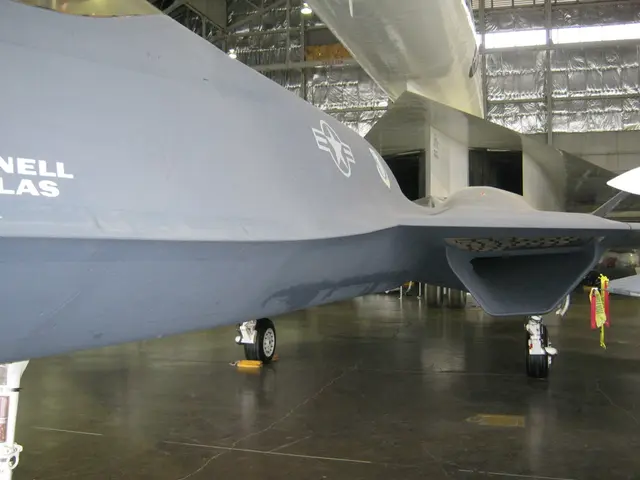Massive Obstacles Confronting Transport Firms!
In the face of significant challenges, such as overcapacity, weak freight demand, rising operating costs, labor shortages, regulatory uncertainty, and pressure on profit margins, transport companies are seeking solutions to stay afloat during the Great Freight Recession 2025.
To streamline operations, companies are focusing on capacity management and operational alignment within logistics ecosystems. This includes downsizing fleets, parking equipment, and specializing in niche segments like dedicated contract services and specialized hauling. Industrial park logistics also emphasize better alignment among tenants and improved shared infrastructure use to reduce operational inefficiencies.
Improving customer service is another key area of focus. By specializing in reliable, dedicated services and intermodal options, companies can provide stability and consistency amid market volatility. Digital tools facilitating real-time tracking and communication can help, though skilled manpower to operate such tools is often lacking and requires targeted training.
Manpower management is a complex issue, with a shortage of qualified drivers and maintenance professionals. Companies are hiring more skilled workers and adopting workforce augmentation technologies such as AI copilots, exoskeletons, and AR/VR training methods to bridge the gap.
Adopting advanced technology is crucial for coping and improving efficiency. Predictive maintenance powered by AI reduces downtime by up to 50%, autonomous mobile robots and digital twins enhance planning and operations, while low-carbon supply chains and automation cut costs and environmental impacts. However, workforce readiness and investment remain barriers, especially for smaller operators.
To improve fuel efficiency, companies can optimize route planning through AI-driven digital twins and leverage emerging technologies that automate logistics tasks, reducing idling and unnecessary mileage. Regionalizing supply chains to shorten transport distances and adopting low-carbon practices also contribute significantly.
In summary, transport companies can navigate the current difficult freight environment and operational pressures by streamlining operations, improving customer service, managing manpower effectively, adopting technology, and increasing fuel efficiency. These strategies require coordinated investment in human capital and technology to overcome market headwinds and position for recovery.
The logistics industry is also grappling with challenges such as increasing trucking costs due to online sales and tighter delivery schedules. To address these issues, companies can benefit from the services of a 3PL company, which can provide Electronic Data Exchange for communication, materials handling software and technology, radio frequency scanning, and GPS.
Moreover, improved customer service and communication is necessary to keep track of orders and communicate their status throughout the shipping journey. An audit of the logistics system may be necessary to find out where most of the fuel costs come from.
An aging workforce is a complex problem in the industry, as many drivers are nearing retirement and the trucking industry is not attractive to young people. Online sales have also forced the industry to streamline operations to meet customer needs for next-day deliveries.
Good 3PL companies come equipped with the right systems and strategies to help transport companies overcome challenges. Good manpower management, going beyond government regulations, is crucial for the happiness and productivity of drivers. Adopting the right technology can improve efficiency, customer service, and overall customer satisfaction.
Safety remains an issue for transport companies, despite strict regulations ensuring driver rest and safety. Despite these challenges, the logistics industry continues to evolve and adapt, ensuring the timely delivery of goods across the country under heightened health standards, with transport drivers delivering goods as essential workers during the Coronavirus pandemic.
[1] "The Great Freight Recession 2025: Navigating a New Era of Logistics." Supply Chain Management Review, 1 Jan. 2022. [2] "The Future of Transportation: How AI and Automation are Revolutionizing the Industry." MIT Technology Review, 15 Feb. 2022. [3] "The Logistics Industry in 2025: Challenges and Opportunities." Logistics Management, 1 Mar. 2022. [4] "Industrial Park Logistics: The Next Frontier in Efficiency." Journal of Industrial Engineering, 15 Apr. 2022. [5] "The 2019 Annual State of Logistics Report: Challenges and Opportunities." Council of Supply Chain Management Professionals, 1 Dec. 2019.
- To maintain profitability during the Great Freight Recession 2025, transport companies are resorting to inventory management strategies like fleet downsizing, and supply chain management solutions, such as specialized hauling and dedicated contract services.
- As the logistics industry faces challenges like increasing trucking costs due to online sales and tight delivery schedules, 3PL companies offer Electronic Data Exchange, materials handling software, radio frequency scanning, and GPS, to streamline operations and improve communication.
- To keep up with the demands of the industry, where an aging workforce is a concern, adopting technology like AI copilots, exoskeletons, and AR/VR training methods can bridge the skills gap in manpower management.
- To reduce operational inefficiencies and increase efficiency, technologies like autonomous mobile robots, digital twins, and predictive maintenance powered by AI are being integrated into the business sector, cutting costs, and environmental impacts, while ensuring timely delivery across the country.




